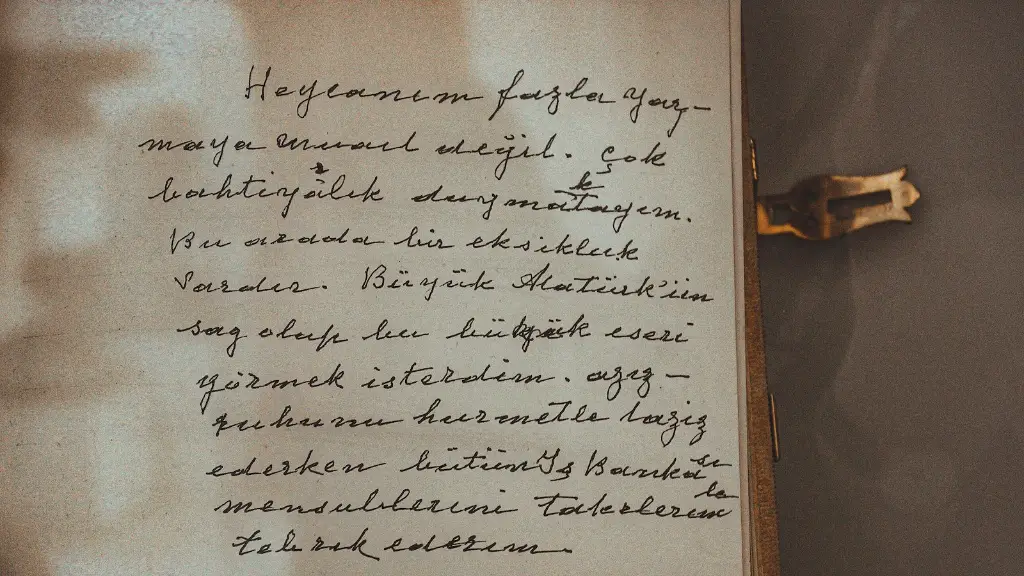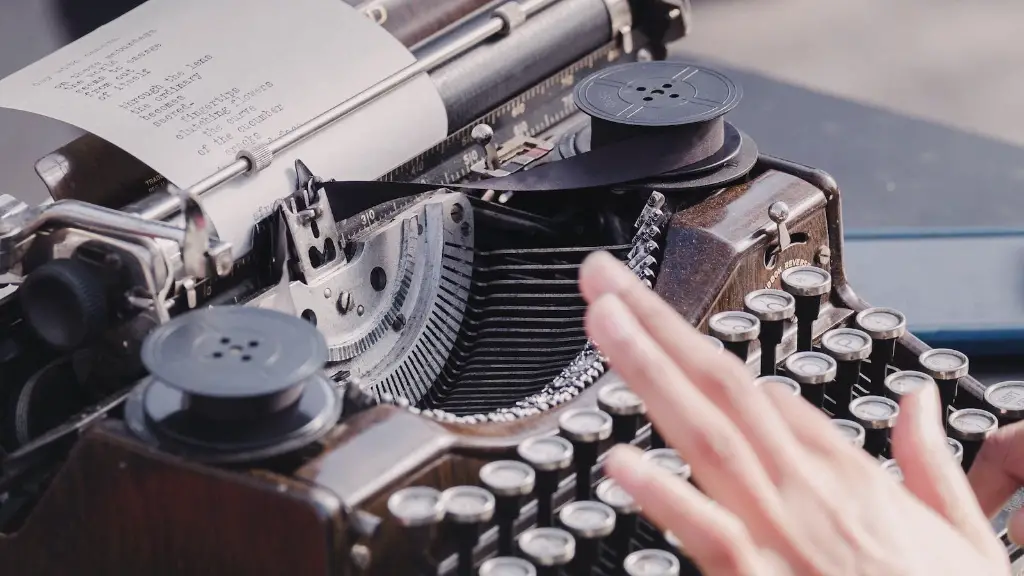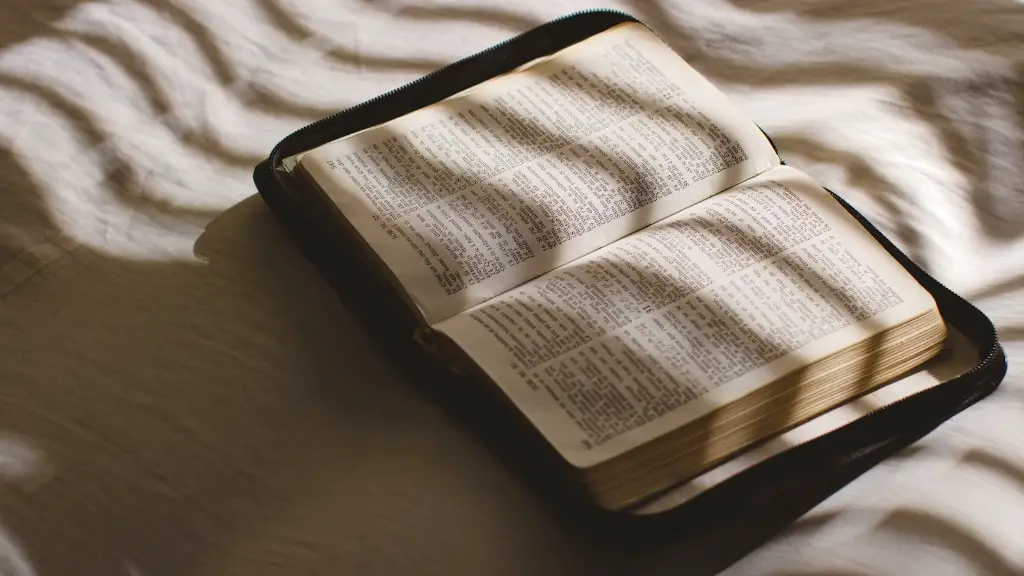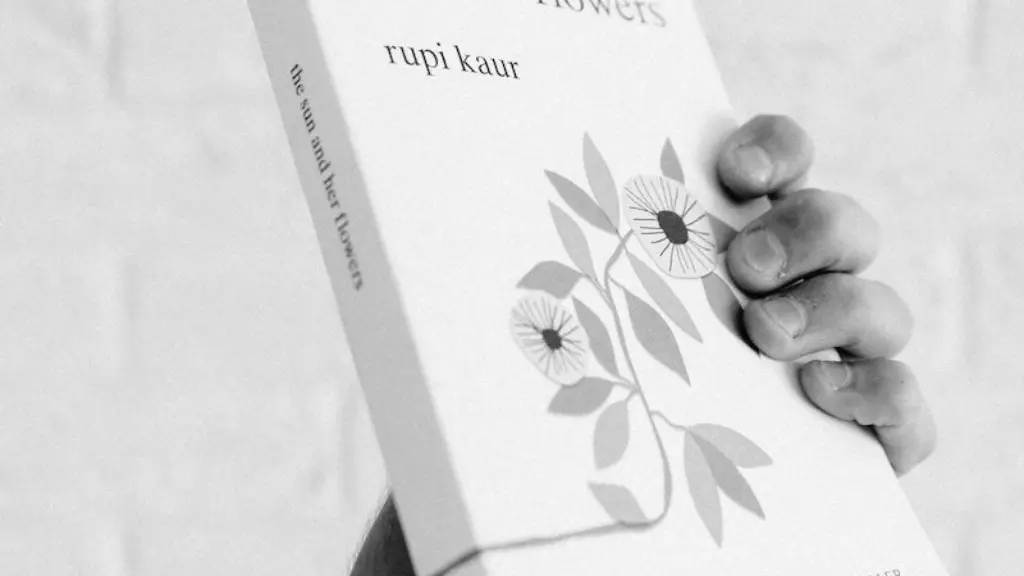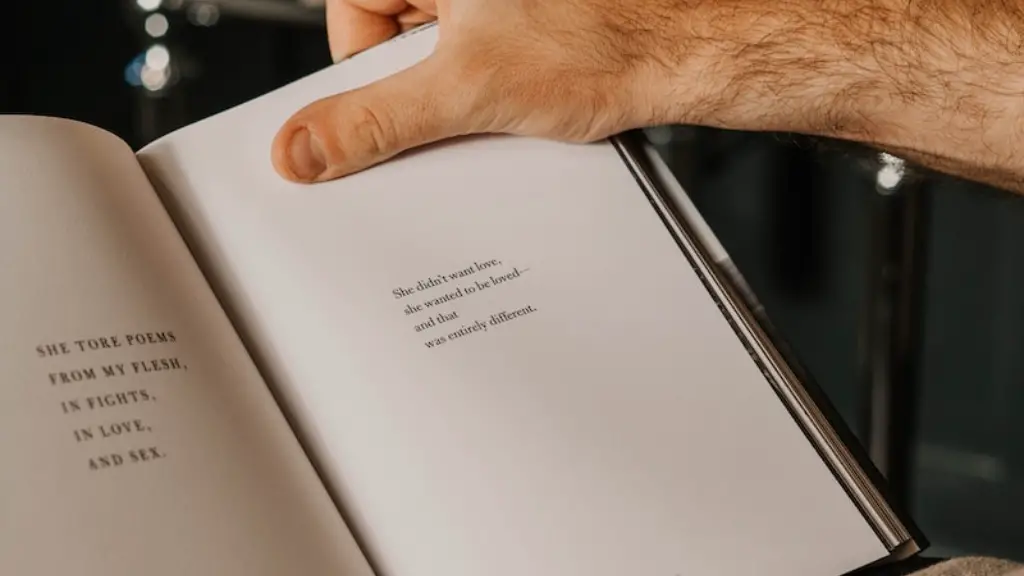Syllables are the smallest units of pronunciation that form the foundation of a poem. Syllables are the basic building blocks of a poem and a poet’s use of syllables to create different effects can greatly enhance the artistry of a work. It is essential to understand syllables in order to appreciate and understand poetry.
When breaking down a poem, counting how many syllables are in a line is one of the most important steps. It helps poets fully understand the structure of their poem and how each word affects the meaning and structure of the poem. Additionally, it helps poets understand how many beats and pauses they should use in the poem. This information can be used to create the rhythmic quality of the poem.
Not only do syllables affect the rhythm and sound of the poem, but they shape the words as well. The arrangement of syllables helps poets create emphasis when used strategically. The addition or removal of syllables can change the pace and flow of a poem by emphasizing certain words or creating a pause for dramatic effect.
Similarly, using syllable emphasis is a common feature in traditional poetry. Many traditional poetic forms rely heavily on syllable counting, such as Japanese haiku and tanka and the English sonnet and villanelle.These poetic forms are heavily reliant on patterns of syllables to help create the rhythm and tone of the poem, as well as emphasize certain words or ideas.
The use of syllables can also enhance the imagery of the poem. For instance, a poet may choose to use short, concise words in a line of poetry to emphasize a particular moment or emotion. Additionally, by adding extra syllables, a poet can create a feeling of lingering in a moment or adding a dream-like quality to the poem.
Syllables are an essential component to any poem because they provide the foundation upon which the poem is built. Understanding how to use syllables is essential for writing compelling and effective poetry. By mastering the art of syllable counting, a poet can create a work that is powerful, evocative, and beautiful.
Rhythm and Meter
Poetry relies heavily on rhythm and meter. These aspects of poetry are created primarily through the use of syllables. The number of syllables in a line and the patterns they create and an important part of the delivery of a poem. Understanding how to use syllables to create different meters forms an important part of a poet’s craft.
A common meter used in poetry is called iambic pentameter. This is five pairs of syllables with the emphasis on the second syllable. Each pair is called an iamb, and when read in this meter, the poem has a steady rhythm and flow. Other common meters are trochaic and anapestic, which similarly involve the use of syllables and emphasis.
The use of meter can help enhance the mood and tone of the poem. By focusing on the particular syllables, poets can either make the poem slower and more labored, which can create a sense of sorrow, or faster and more uplifting, which can invoke optimism.
Understanding these various meters and learning how to incorporate them into a poem is a skill all poets should have. The use of syllables to create different patterns helps create the rhythm and mood of a poem, therefore, it is essential that poets become familiar with the range of different rhythmic patterns they can use.
The Role of Rhyme
Rhyme is one of the most powerful tools a poet has, and it is heavily reliant on the use of syllables. Rhyme serves many functions in poetry. It creates unity, flow, and structure for a poem. Additionally, it helps to create mood and tone for the poem, as well as convey certain ideas and images.
Rhyme requires that words share the same ending sounds, which can only be accomplished by analyzing and understanding the syllable structure of a word. By understanding the syllables and patterns that rhyme with a certain word, poets can create more unified and powerful poems.
Rhyme can be used for multiple poetic functions. It can add a comic element or a dream-like quality, depending on the particular rhyme scheme used. Additionally, rhyme can help create a sense of unity throughout the poem and make certain words stand out. Lastly, it can give structure to the poem, making it easier to read and remember.
Fundamentally, the poet’s use of rhyme relies heavily on the mastery of syllables. Understanding syllables is essential for creating powerful and effective rhyme in a poem. By grasping how syllables work and how they relate to each other, poets can create vivid and memorable rhymes that can add layers of meaning to their work.
Emotional Connection
Syllables play an important role in creating an emotional connection with readers. By using the right syllables at the right time, poets can emphasize certain words and feelings. This helps to create an emotional impact in the poem and engage readers in the meaning of the poem.
One example of this is to vary the syllable count in a line. By breaking up the traditional meter of a poem and introducing more syllables in certain lines, poets can create increased emphasis on certain words. By doing this, they can evoke a strong emotional response from the reader.
Additionally, the use of rhyme can also convey certain emotions. By creating a rhyme, poets can create a musical quality to the poem. This helps evoke emotions and encourages the reader to feel a sense of resonance with the poem as they read.
Syllables also help create dynamics in the poem. By creating patterns of syllables, poets can create pauses and emphasize certain parts of the poem. This helps to create a sense of drama and tension in the poem and helps to draw readers into the poem.
Ultimately, syllables are integral to creating an emotional connection with the reader. By using them strategically, poets can create powerful and evocative poems that will draw in and resonate with readers.
Analysis of Syllables
Breaking down a poem and analyzing the syllables it contains is a key step in understanding and appreciating a poem. This process involves more than just counting the syllables; it involves understanding the relationship between the syllables and how that affects the meaning and delivery of the poem.
Poets should take the time to analyze the syllables of each line and the effect they create. By breaking down the poem and examining the syllables, poets can understand how to structure the poem and how to create emphasis and emotion. This process can also reveal imagery and additional meaning within the poem that might have previously gone unnoticed.
In addition to analyzing the poem, poets should also consider how to use syllables to convey meaning. This may involve experimenting with different meters and rhyme schemes, or varying the number of syllables in each line. This will help poets create a powerful and evocative poem.
Finally, poets should consider how the use of syllables interacts with their own voice and writing style. This can help them find the unique style and voice that exists within their writing.
Conclusion
Ultimately, syllables are an essential component to any poem. They provide the tools for poets to create beautiful, evocative works of art. By understanding syllables and learning how to use them strategically, poets can craft powerful and compelling pieces that convey meaning and emotion.
